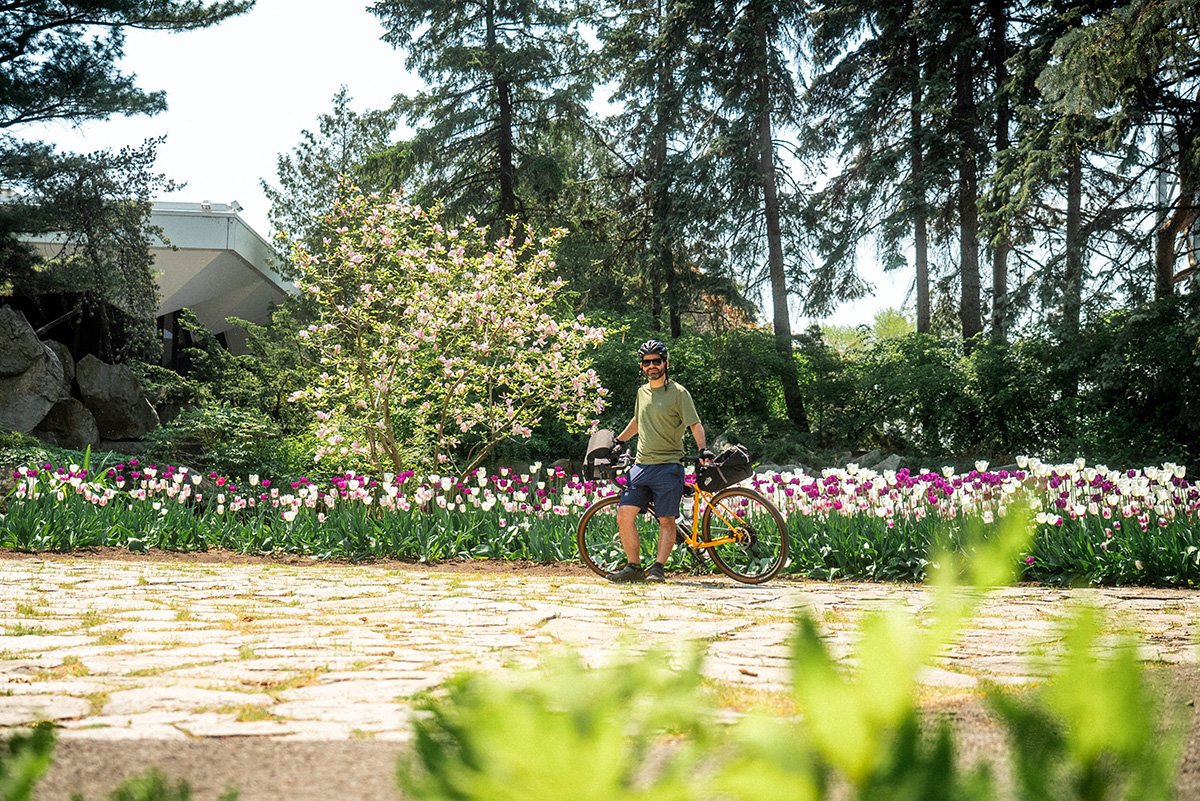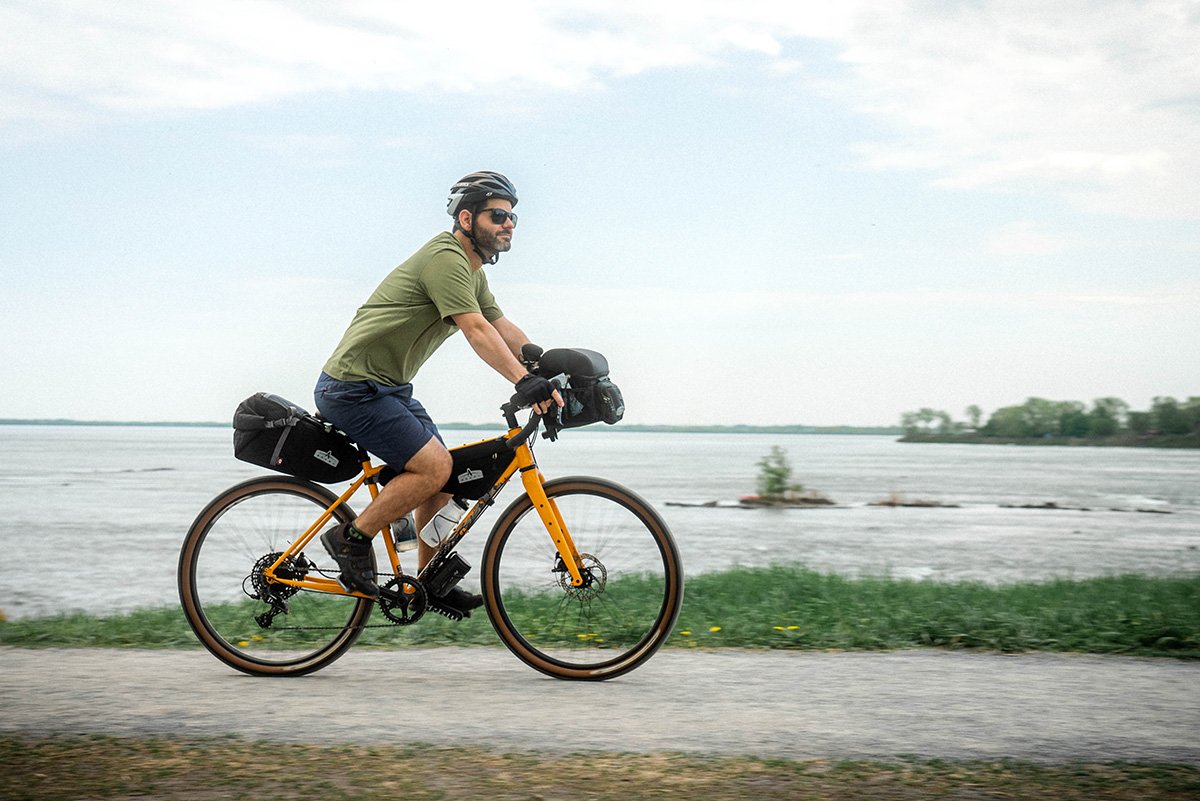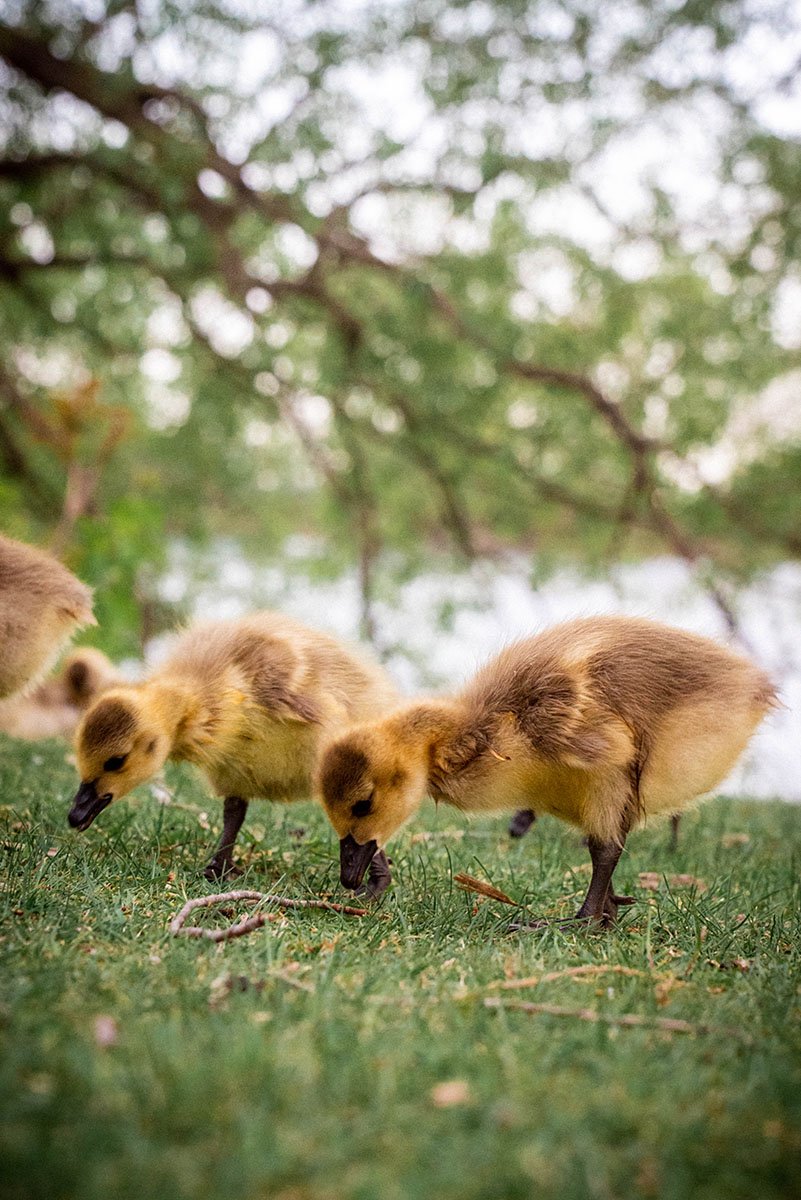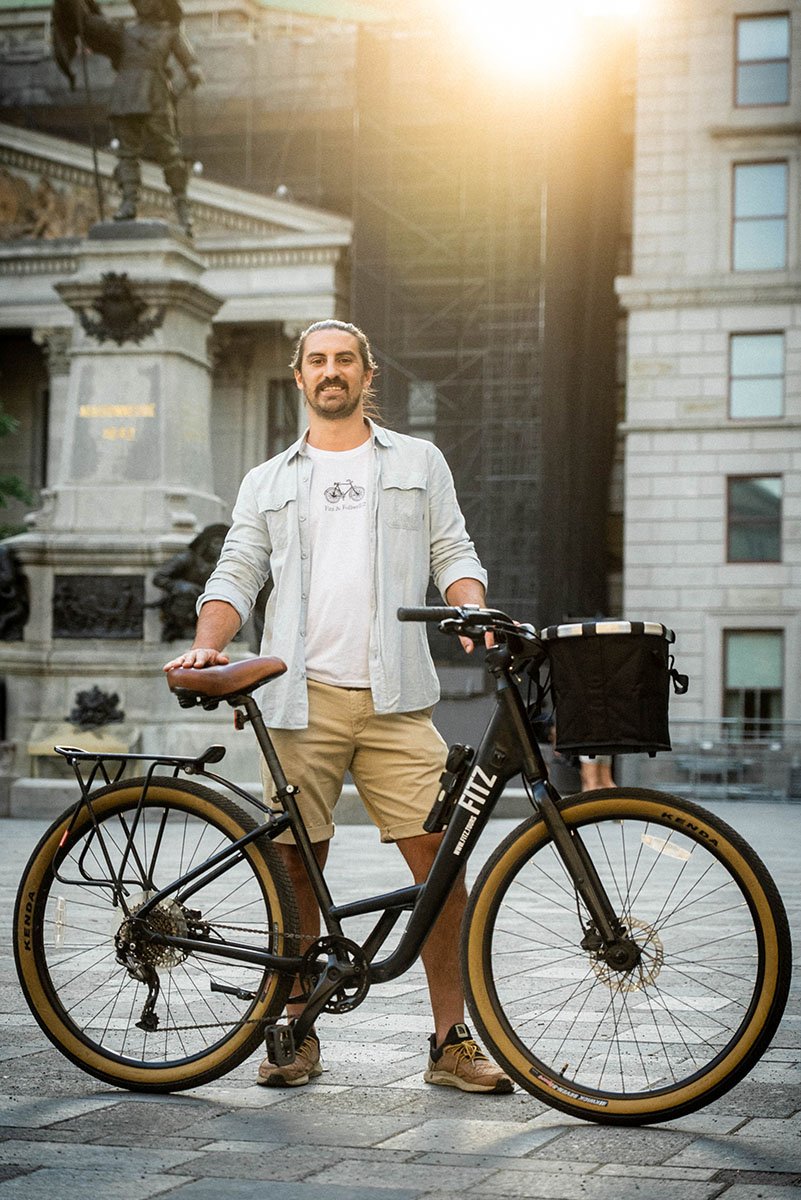Montreal: an island and its river by bike
The island of Montreal has nearly 1000 km of bike paths. Through large parks, over a few bridges and along the river and canals, I walked fifty.
This article first appeared in the excellent magazine Vélo Mag, October 2021 edition. You will also find a video produced for the webseries of la Route verte at the bottom of the article.
I begin my loop to the House of cyclists. Headquarters Vélo Québec since 1994, the place got a makeover in 2018 to welcome and restore the full range of cyclists in the metropolis. I enjoy a cortado and a smoked salmon sandwich before heading out into the large La Fontaine park, on the other side of the street.
I amuse myself on the modules of the Jardin du petit monde à vélo, a cycling education park, then pass a few ladies practicing yoga under the shade of the trees. In a few blocks, I'm already climbing the Jacques-Cartier bridge to cross the river for the first time. I stop for a moment during the climb to admire some of the city's iconic buildings, including those of the Molson brewery and the old and new Radio-Canada houses.
The islands
I then branch off towards Île Sainte-Hélène, where the noise of the traffic fades immediately to give way to the songs of the birds and the rustling of the leaves. The island was thus named by Samuel de Champlain in 1611, in honor of his young wife, Hélène, while he explored the river in search of a place to establish a new colony. A public park was created there in 1874, accessible only by ferry until the construction of the Jacques-Cartier bridge in 1930. Île Sainte-Hélène was then enlarged in anticipation of Expo 67, while Île Notre- Neighbor lady on which I continue was created from scratch.
A stone's throw from downtown Montreal, Île Sainte-Hélène is perfect for listening to birdsong and the rustling of leaves. (credit Guillaume Milette)
Despite all the earth from the excavation of the Montreal metro and the several million tons of backfill from quarries, there is a lack of materials and time to complete the site before Expo. The solution is most magnificent: lakes and canals are left in the center of the islands. I go around these by la Route verte, which takes the popular Gilles-Villeneuve circuit here. I even try to hold on to a female peloton in full training, but I get dropped in about fifteen seconds.
Among the vast flora of Île Sainte-Hélène. (credit Guillaume Milette)
Access to the river via the Berges cycle path, in LaSalle. (credit Guillaume Milette)
The banks
Continuing south on the strip of land that is the Little Way of the River, I have the St. Lawrence on my right and the seaway on my left. I use the slender boom of the Champlain Bridge – its icebreaker – to return to Montreal. I cross Verdun then LaSalle on the Berges bike path, the most beautiful in Montreal according to Hugo Lavictoire, owner of KSF Montreal, where you can rent kayaks, surfboards and paddle boards.
At his suggestion, I stop at Guy's wave and chat with the many river surfers. I ask them jokingly how the waves in Montreal compare to those in Sydney or Rio de Janeiro. To my surprise, no one blushed at the comparison.
“The advantage of Montreal is that you can surf there every day and in all seasons,” local legend Jérémie Gauthier-Lacasse told me. His (isothermal) gimmick follows his chops: he surfs here about 300 days a year!
A few baby geese in the grass of the riverside parks. (credit Guillaume Milette)
Montreal is also a place for surfing. Here, Jérémie Gauthier-Lacasse rides the wave at Guy. (credit Guillaume Milette)
A passage to Lachine
Lookouts overlooking the Lachine Rapids and Lake Saint-Louis line up along my route. In LaSalle, I stop to read the heritage sign at the Fleming Windmill. Dating from 1827, it is one of the last still standing. Its conical appearance and its construction in old field stones give the borough a country air.
At the end of boulevard LaSalle, I arrive at Lachine Museum. This is notably established in the Le Ber-Le Moyne house, the oldest complete building in the metropolis. In this construction carried out between 1669 and 1671, I discover there a panoply of objects which shaped the life of the natives, peasants, bourgeois, French, British and Canadians who walked on these lands. It was also in 1669 that the Côte-Saint-Sulpice seigneury was granted to René-Robert Cavelier de LaSalle. The latter, however, spent so much more time looking for a passage to Asia than taking care of his lordship that his lands earned them the nickname of China.
Duality at the Old Port
The sun going down on the horizon, I set out, at the exit of the museum, on the popular trail of the Lachine Canal (inaugurated in 1977) with a view to returning to my starting point. The day was hot and the track as much as the parks are crowded. I refrain from stopping for ice cream, being already late for my meeting with Diego Salamone in front of the Notre-Dame basilica. This Argentinian turned Montrealer suggested this meeting place. The man who founded a city bike tour company in Buenos Aires now operates Fitz Montreal for the same purpose here.
On the charming Lachine Canal bike path. (credit Guillaume Milette)
Diego Salamone, an Argentinian turned Montrealer, offers guided bike tours in the metropolis. (credit Guillaume Milette)
It proves to me that, even when you think you know a city, there are always curiosities to discover. On the Place d'Armes, he points to the double sculpture The French poodle and the English pug, a creation by Marc André J. Fortier. Also called The two snobs, this bronze work, where each of the two characters holds in their arms a dog linked to their culture, represents the linguistic duality of the metropolis. If the man and the woman avoid looking at each other by raising their noses in the air, their dogs try to escape from their masters to go play together.
Under a fabulous golden light that makes my guide's long hair shine, I tell myself that there is no better than a Spanish speaker who learned French for the love of a Quebecer to tell me this story.
so much to see
Montreal is probably not the first destination that comes to mind when you think of la Route verte, which criss-crosses the four corners of Quebec. But with so many miles of bike paths, and even more quiet streets, the possibilities for discovery are nearly endless.
Each kilometer contains a panoply of small and big stories, and the hardest part for me was not constantly stopping to learn more. I return to the Maison des Cyclists a few minutes before the end of the day. My fifty kilometers in Montreal will have taken me no less than twelve hours!
Landmarks
Itinerary: A 50 km loop in one day. See on Google Maps.
MY GOOD ADDRESSES
- At the crossroads of the Brébeuf and Rachel cycle paths, we find the House of cyclists, Headquarters Vélo Québec and meeting place, as well as Fitz Montreal, which offers guided city tours by bike.
- A few minutes from downtown Montreal, Parc Jean-Drapeau offers a wide range of sports and cultural activities, or simply a nice quiet place to stop.
- KSF Montreal, in LaSalle, offers surfing, kayaking and SUP lessons, in addition to renting equipment. La vague à Guy is 1 km further to the south-west.
- Open during the summer season, the Lachine Museum presents some permanent and temporary exhibitions on the daily life of the inhabitants during the last 350 years.
The good world of la Route verte is a 10-episode web series, which I produced for Vélo Québec. All episodes are available for free here.
















Impossible to miss the vast Gatineau Park which, on the map of the Outaouais, expands like smoke from a campfire. By combining it with the cycle paths of la Route verte, I was drawn to its many trails, lakes, and stretches of forest that seemed to invite me personally.